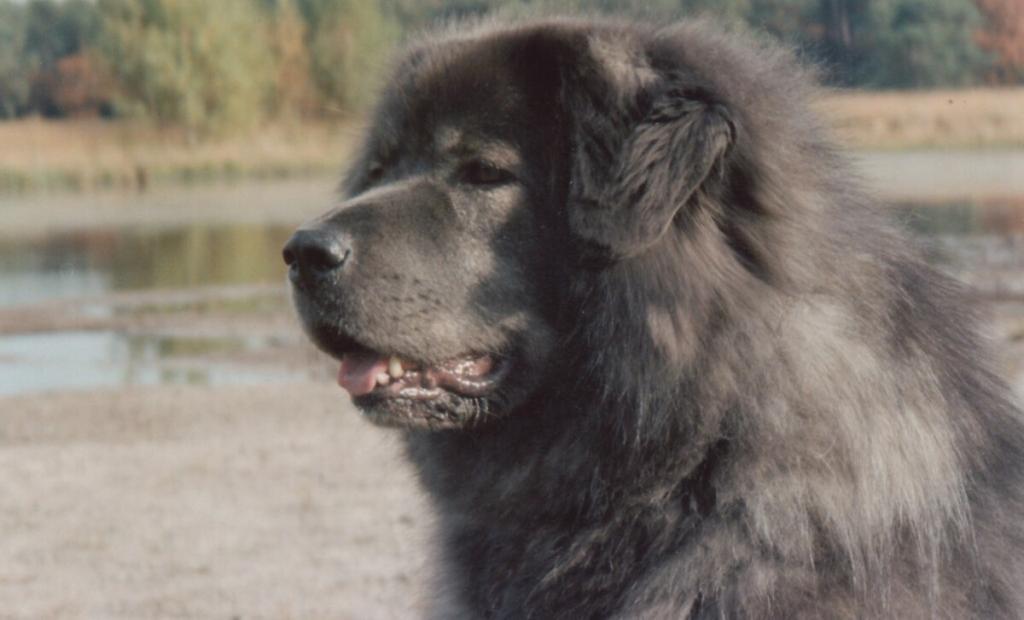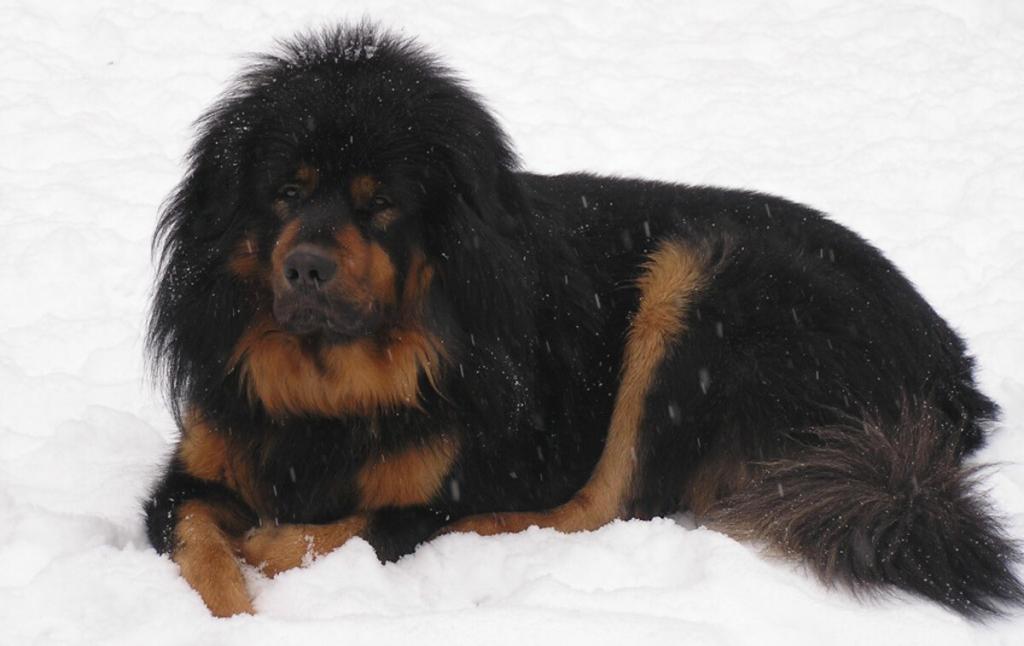While you might think the Tibetan Mastiff is too challenging for a first-time dog owner, you’ll find it can be a rewarding companion with the right approach.
As you consider bringing this ancient guardian breed into your home, you’ll be fascinated by their unique blend of stoic independence and deep loyalty.
They’re not just oversized lapdogs; these complex canines require a dedicated hand in training and socialization to ensure they develop into well-adjusted family members.
To keep them healthy and content, you’ll need to understand their distinct personality traits, exercise needs, and grooming requirements.
Stay tuned, and you’ll discover the keys to unlocking the potential of these noble guardians, ensuring a harmonious relationship that honors their storied past and your future together.
- Noise Level
- Energy
- Sociability
- Trainability
- Care
- Health
Overall
Summary
The Tibetan Mastiff typically rates moderately across various characteristics, with moderate noise levels, energy, and trainability. They exhibit a moderate degree of sociability, requiring adequate socialization. Care and health considerations are relatively high due to their large size and potential health issues.
Tibetan Mastiff: Traits, Temperament, and Care Guide
Guarding homes with unwavering loyalty, the Tibetan Mastiff is commanding, demanding experienced handling and consistent training to thrive as a family protector. As a member of ancient dog breeds, initiating socialization and basic obedience early is imperative to mitigate liability risks associated with their protective instincts.
The Tibetan Mastiff’s majestic, flowing mane is part of a dense double coat that surprisingly requires minimal grooming. However, their robust size necessitates moderate exercise regimented to avert exacerbating potential health concerns such as hip dysplasia.
This breed’s history as temple guardians instills a confident, self-reliant temperament, ensuring that, with the right care, you gain not just a pet but a devoted member of your family.
Exploring the Characteristics of the Tibetan Mastiff
Delving into the characteristics of the Tibetan Mastiff, you’ll discover a breed defined by its robust stature and vigilant nature, suited for the role of a working dog within the historical context of its development. This ancient breed, once used as guardians in the Himalayas, possesses a commanding presence with a natural inclination to protect. Tibetan Mastiffs require substantial physical activity to maintain their health, yet owners must approach exercise cautiously to safeguard their joints.
| Group & Size | Temperament | Health & Care |
|---|---|---|
| Working Group | Loyal Protector | Genetic Conditions |
| 24-26 inches tall | Wary of Strangers | Early Training |
| 70-150 pounds | Difficult to Train | Experienced Owners |
| Double Coat | Guarding Instincts | Regular Brushing |
| Various Colors | Minimal Shedding | Moderate Appetite |
As a large dog, the Tibetan mastiff breed is not for everyone. It demands an owner who understands the need for early socialization and consistent leadership.
Tibetan Mastiff: A Comprehensive Profile and Guide
The Tibetan Mastiff is a majestic and robust canine, requiring a nuanced understanding of its unique traits and care needs. Their physical stature and protective nature demand an owner who can provide firm guidance and appropriate socialization.
This guide will cover the essentials of managing their health, training, and daily maintenance to ensure a well-adjusted and healthy companion.
Everything You Need to Know
When considering the Tibetan Mastiff as a pet, it’s essential to understand their needs for early socialization, experienced handling, and consistent training to manage their protective instincts. Here’s what you need to know:
- Socialization: Introduce your Tibetan mastiff puppy to various environments and individuals early on to ensure a well-adjusted temperament.
- Exercise: Moderate daily exercise, avoiding strenuous activity to protect their joints.
- Grooming: Commit to weekly brushing and more frequent grooming during shedding seasons to maintain their double coat.
- Health Care: Provide high-quality dog food, monitor for Common Health Problems, and keep your dog’s health care up-to-date with regular check-ups.

Discovering the Temperament
How does the temperament of the Tibetan Mastiff reflect its history as a guardian breed?
Tibetan Mastiffs are extremely protective, displaying a temperament rooted in centuries of guarding. These dogs are territorial, independent, and strong-willed, yet remain devoted and gentle within the family unit. Their aloofness towards strangers underpins their protective nature.
Mastiffs are known to be independent, sometimes disobeying orders, which can make them difficult to train. They generally exhibit good behavior with other dogs and pets, demonstrating loyalty and fearlessness. Training a Tibetan Mastiff requires early socialization and respect training due to their intelligence.
Moderate exercise suffices for these dogs, as they prefer cooler climates and work-related tasks over play. Their temperament makes them more suitable for experienced dog owners.
Tibetan Mastiff: Is It a Good Fit for Families?
You may wonder if a Tibetan Mastiff aligns with your family’s lifestyle.
Consider their firm training and socialization requirement, which is critical in mitigating their inherent territorial tendencies.
Furthermore, their substantial size and grooming demands necessitate a dedicated approach to their care.
Assessing Tibetan Mastiff’s Compatibility with Families and Kids
Assessing the Tibetan Mastiff’s compatibility with families and children requires understanding their protective nature and the necessity for early socialization to foster a safe environment. Remember, these Mastiffs aren’t typically recommended for first-time dog owners due to their independence and strong-willed temperament.
Here are key considerations:
- Early Socialization: Integral for ensuring the Tibetan Mastiff gets along well with children and other pets.
- Experienced Handling: Owners should be adept at managing this breed’s protective instincts.
- Dietary Oversight: Be prepared for instances when they may go on a food strike; consistent high-quality diet is crucial.
- Association Guidance: The American Tibetan Mastiff Association can provide resources on training and care for optimal integration into family life.
Climate Resilience of Tibetan Mastiffs
The Tibetan Mastiff exhibits remarkable adaptability and evolved to thrive in both the bitter cold of high altitudes and the variable temperatures of its Himalayan homeland. This ancient breed, originating from Tibet as early as the times when Central Asia’s geography was being penned, is the epitome of climate resilience.
Their thick double coat, akin to a lion-like appearance, provides insulation against icy drafts, while their robust frame ensures they can withstand the rigors of seasonal changes.
You’ll find that the Tibetan guardian is also surprisingly tolerant of moderate heat, a testament to their adaptability. Even their ear canals are less prone to infection due to the dry, cold air they’re accustomed to.
Keep our content close, for it’s essential in understanding how these resilient canines have become symbols of strength and fidelity.

Obedience Tips for Mastiffs
You must begin training your Mastiff early, employing consistent techniques to instill desired behaviors.
Utilize positive reinforcement tactics, rewarding compliance to reinforce good conduct efficiently.
Ensure you’re the pack leader, providing clear and calm directives to maintain control and respect.
Effective Training Strategies
To effectively train a Tibetan Mastiff, start early and consistently apply training techniques to address their stubborn tendencies. Reward-based methods are crucial; they reinforce positive behavior in a way that respects the mastiff’s ancient lineage. Given their size, ensure you’re capable of physically managing your Mastiff, particularly males, which can be more domineering.
Introduce your Tibetan Mastiff to various environments and situations for thorough socialization. Pay attention to how much praise and treats you offer—don’t let them skip a meal, but don’t overindulge them either. Consistent, firm training will affirm that you’re the right dog owner for this majestic breed.
| Age to Start Training | Activity | Emotional Benefit |
|---|---|---|
| Puppyhood | Playing Fetch | Builds Bonding |
| Adolescence | Obedience Drills | Establishes Respect |
| Adulthood | Advanced Commands | Enhances Loyalty |
Exercise and Grooming Needs
Considering Tibetan Mastiff puppies’ susceptibility to joint conditions, it’s critical to manage their exercise with care, avoiding high-impact activities until they reach full maturity. This means limiting or avoiding repetitive exercises such as jogging or jumping for your best friend.
Instead, daily leisurely walks, lasting 30 to 60 minutes, are optimal for maintaining their health without overexertion. Keep in mind that Tibetan Mastiffs aren’t built to be jogging partners or agility champions; their exercise needs must be met with an understanding of their unique physicality.
Proper exercise can exacerbate common health concerns such as Retinal Atrophy and elbow dysplasia. Additionally, monitoring their food intake is crucial to prevent weight gain, which can further strain their joints. Regular grooming also helps manage hair loss and maintain the coat’s condition, a key aspect of caring for these purebred dogs.
Health Considerations
You must be aware of the common health issues affecting your Tibetan Mastiff, as these will influence their lifespan.
Dental disease, for instance, not only compromises oral health but also has the potential to trigger systemic complications.
Furthermore, they’re prone to infections like parvo and distemper, and conditions associated with obesity, such as joint disorders and cardiac ailments.
Common Health Issues and Lifespan
A Tibetan Mastiff’s lifespan ranges from twelve to fifteen (12 – 15) years. While Tibetan Mastiffs are admired for their majestic appearance and loyal temperament, they’re prone to several health issues that prospective owners should be aware of, including dental disease and joint problems.
As a compassionate caretaker, you must monitor your companion for certain health conditions prevalent in adult Tibetan mastiffs. Regular dental check-ups are vital to prevent periodontal disease, which can lead to tooth loss and impact general health. You must also seek veterinary guidance to ensure your pet isn’t suffering from painful inflammation due to joint issues, such as hip dysplasia.
Ensure your Tibetan Mastiff maintains a healthy weight to prevent obesity-related health problems. Consistent exercise and portion control are key. Additionally, screening for inherited diseases like hypothyroidism—where the body doesn’t produce enough thyroid hormone—is crucial. Stay vigilant for symptoms and explore treatment options to safeguard your dog’s well-being.
Is Tibetan Mastiff the Right Dog for You?
Determining whether a Tibetan Mastiff aligns with your lifestyle and experience is crucial. This breed is best suited for someone with a strong understanding of dog behavior and ample living space. Recognized by the American Kennel Club, these guardians require commitment to maintain a healthy life.
If you’re prepared to keep a large and powerful dog indoors, offering patient training and consistent socialization, this may be the breed for you. As a devoted protector of home and family, the Tibetan Mastiff demands respect and may not accommodate another dog easily. Anticipate occasional challenges, such as a food strike, requiring less intervention than expected.
Evaluate your readiness for a complex, yet rewarding canine relationship before embracing the Tibetan Mastiff as your companion.
Alternatives for Tibetan Mastiff: Majestic and Protective Large Breeds
Explore these breeds if you’re drawn to the Tibetan Mastiff’s majestic presence and protective nature, ideal for those who value powerful and dignified large dogs.
| Similar Dogs | Short Description |
|---|---|
| Newfoundland | Gentle giant, excellent in water rescue, sweet nature. |
| Saint Bernard | Large working dog, rescue instincts, gentle temperament. |
| Bernese Mountain Dog | Strength, calm demeanor, loyalty. |
| Great Pyrenees | Protective nature, calm temperament. |
| Leonberger | Combination of strength and gentleness, great family companion. |
Conclusion
In conclusion, as a Tibetan Mastiff owner, you’re embracing a breed with a noble lineage. Statistically, less than 5,000 of these majestic guardians are registered annually worldwide, emphasizing their exclusivity.
Prioritize socialization and consistent training to mitigate their instinctual wariness. Remember, regular grooming combats shedding, and measured exercise maintains joint health.
This breed demands a knowledgeable handler to thrive. Assess your readiness to meet their needs, and you’ll find a loyal protector in the Tibetan Mastiff.
